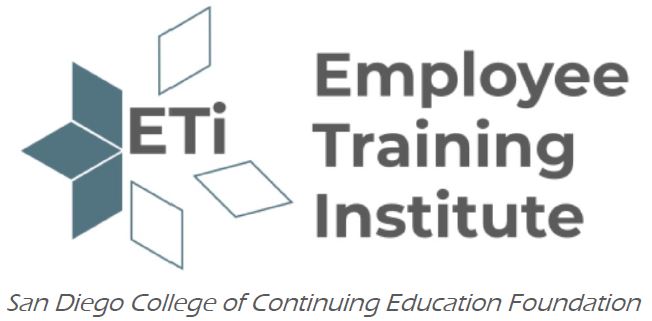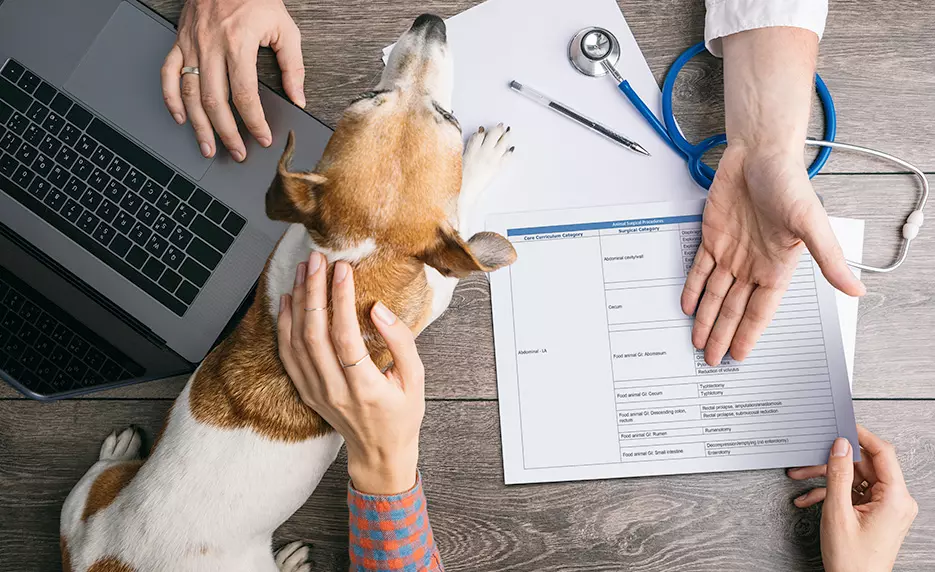Become a Veterinary Office Manager
For pets and their caretakers, the veterinarian’s office staff often does heroic work during a visit. They are responsible for managing stressed animals, assisting with procedures and ensuring the smooth flow of the medical and business aspects of the visit. In this 100% online course, you will prepare to serve as a veterinarian’s assistant and office manager, including skills in handling animals and in handling matters of business in the vet’s office.
Registration and Enrollment
This course is 100% online. Start anytime!
Course Details
- The anatomy and physiology of the major organ systems.
- How to handle medical records and communicate with clients and coworkers.
- How to restrain animals for procedures, take vital signs, and bathe them.
- All about nutrition, vaccinations, and administering medication.
- How to assist during surgery and dental procedures.
- Preparation of prescriptions and taking blood samples and radiographs.
- Understand the duties of the veterinary assistant.
- Learn how to efficiently use Microsoft Office Word and Excel and take these skills with you to any workplace.
- Develop your professional communication skills and understand office etiquette.
- Understand the best ways to create and send information or data for the most impact.
- Learn how to effectively use QuickBooks 2018 to save an organization time and money.
- Practice bookkeeping with confidence by becoming aware of the legal standards that apply to accounting methods.
VETERINARY ASSISTANT
- Welcome to the Veterinary Hospital
- Getting Ready for Your First Visit
- Physiology and Anatomy 1: Directional Signs and the Skeletal System
- Physiology and Anatomy 2: The Nervous System, Endocrine System, and Muscles and Joints
- Physiology and Anatomy 3: The Circulatory and Respiratory Systems
- Physiology and Anatomy 4: The Digestive System, Urogenital System, Liver, and Spleen
- Front Office Duties: Records, Confidentiality, and Client Relations
- More Front Office Tips, and Determining Age and Gender of Kittens and Puppies
- Canine Restraint
- Feline and Exotic Restraint
- The Physical Examination: Procedures, Restraint, and Vital Signs
- Everyday Procedures for the Veterinary Assistant
- Workplace Hazards and Infection Control
- The Reproductive Cycle and Sterilization Procedures
- Vaccinology
- Nutrition Basics and Prescription Foods
- Prescriptions: Preparing and Calculating Doses
- Prescriptions: Types of Medications and What They Do
- Giving Medications
- The Euthanasia Process
- Taking Blood Samples
- Interpreting Blood Tests and Handling Blood
- Urine Collection, Handling, and Interpretation
- Tests: Serology, Scrapings, Smears, Flotations, and Necropsies
- Radiographs and Personal Safety
- Radiographic Positioning
VETERINARY ASSISTANT (cont)
- Pain Recognition and Emergency Care
- Dentistry: Charting, Tooth Disease, and Dental Care
- External Parasites: Fleas, Ticks, Mites, and More
- Parasites of the Gastrointestinal Tract and Heart
- Poisonings in Pets
- Surgery 1: Preparing the Patient
- Surgery 2: Your Role During and After
- Understanding Animal Behavior
- The Job Search and Future Opportunities
- Payroll, Partnerships, and Corporations
- QuickBooks – Introductory Concepts
- QuickBooks – Intermediate Concepts
PROFESSIONAL BOOKKEEPING WITH QUICKBOOKS 2018
- QuickBooks Basics
- Bookkeeping Building Blocks
- Preparing the Company File
- Cash and Fixed Asset Transactions
- Understanding Accounts Payable
- Reviewing Accounts Receivable
- Managing Inventory Transactions
- Closing the Books and Reporting in QuickBooks
- Introduction to Microsoft Excel
- Intermediate Microsoft Excel 2016
- Advanced Microsoft Excel 2016
- Microsoft Excel Final Exam
- Introduction to Microsoft Word
- Intermediate Microsoft Word 2016
- Advanced Microsoft Word 2016
- Microsoft Word Final Exam
A High School Diploma or equivalent is recommended but not essential. You do not need any prior experience or training in this field. This course is designed to prepare you to become a veterinary assistant and learn the entry-level position concepts and skills to manage a veterinary practice as a full-charge bookkeeper.
Requirements:
Hardware Requirements:
- This course can be taken on either a PC or Mac.
Software Requirements:
- PC: Windows 8 or later.
- Mac: macOS 10.6 or later.
- Browser: The latest version of Google Chrome or Mozilla Firefox are preferred. Microsoft Edge and Safari are also compatible.
- Adobe Acrobat Reader.
- Software must be installed and fully operational before the course begins.
Other:
- Email capabilities and access to a personal email account.
Instructional Material Requirements:
The instructional materials required for this course are included in enrollment. The following textbooks will be shipped to you approximately 7-10 business days after enrollment:
- Tasks for the Veterinary Assistant, by Teresa Sonsthagen
Jeff Grognet
Jeff Grognet has been a companion animal veterinarian for 25 years. He was a pioneer in the field of veterinary assistant teaching, developing his first course more than 18 years ago. Due to the success of his veterinary receptionist/assistant courses, he expanded his teaching into other high-demand areas including pet first aid and alternative medical therapies for companion animals. He practices at a veterinary hospital and contributes regularly to several magazines.
Wade Lindenberger
Wade Lindenberger is a CPA with over 20 years of financial accounting and management experience in public accounting and private industry. He is currently Director of Finance and Administration for New Children’s Museum. Before his current position, he worked as the National Finance and Accounting Service Line Leader for Premier Alliance Group, a national professional services firm. Wade was also Director of the Finance and Accounting service line for the San Diego office of a global, publicly held professional services firm. Before becoming a consultant, Wade was Divisional Controller for one of the leading health and fitness club chains in the world. He has also been Internal Audit Manager and Divisional Controller for a division of a Fortune 500 global energy project management company. He began his career with Coopers & Lybrand, predecessor to PricewaterhouseCoopers, one of the “Big Four” CPA firms. He has previously served as an instructor for courses at Coopers & Lybrand and UC San Diego and is currently an adjunct professor at the University of San Diego School of Business. He is a member of the American Institute of Certified Bookkeepers’ Advisory Board.
$1,995
Listed Price: $2,145
7% off
This course is 100% online.
| Course Hours | Duration | Start Dates |
|---|---|---|
| 225 Course Hrs | 6 Months | Start anytime! |
Job Outlook
According to the US Bureau of Labor Statistics (BLS), demand for veterinary professionals is expected to grow by 16% between now and 2029. That is triple the expected overall growth rate for all jobs.
PayScale.com reports that Veterinary Practice Managers earn $49,859 per year, on average. Many also earn performance bonuses and commissions that can add up to $8,800 to their base pay. PayScale.com also notes that over 4 out of 5 Veterinary Office Managers report that they are “highly satisfied” with their jobs.
FAQs
WHAT DOES A VETERINARY OFFICE MANAGER DO?
Veterinary Office Managers are responsible for the smooth flow of business through a veterinarian’s office, including financial reporting, patient records management and client communication.
WHAT DO A VETERINARY ASSISTANT’S DUTIES INVOLVE?
In their role as veterinary assistants, Veterinary Office Managers work directly with animals. They often prepare them for procedures, take and record vital signs, trim their nails and bathe them. They frequently assist during surgeries and with post-surgical care. They may also consult with pet caretakers about nutrition, vaccinations and medications.
“My facilitator was extremely helpful. I learned a lot and it was a whole lot more fun than I expected it to be,”
A.K., Cal State San Marcos

